Before we start: Is it possible to recover a permanently deleted X3F file? Yes, with Donemax Data Recovery, one of the best data recovery software, you can easily recover deleted X3F files and recover lost X3F files from formatted hard drive, corrupted device or lost hard drive partition.
PAGE CONTENT:
The X3F file format, though not as widely known as formats like JPEG or TIFF, plays a critical role for photographers who use Sigma digital cameras. This format is directly linked to Sigma's proprietary Foveon X3 sensors, which are unique in their ability to capture three layers of color information in a single pixel. In this article, we will dive deep into what the X3F file format is, its advantages, common scenarios where these files might be lost, and how to recover them if necessary. Additionally, we will explore the various methods you can use to ensure your X3F files are safe from data loss.
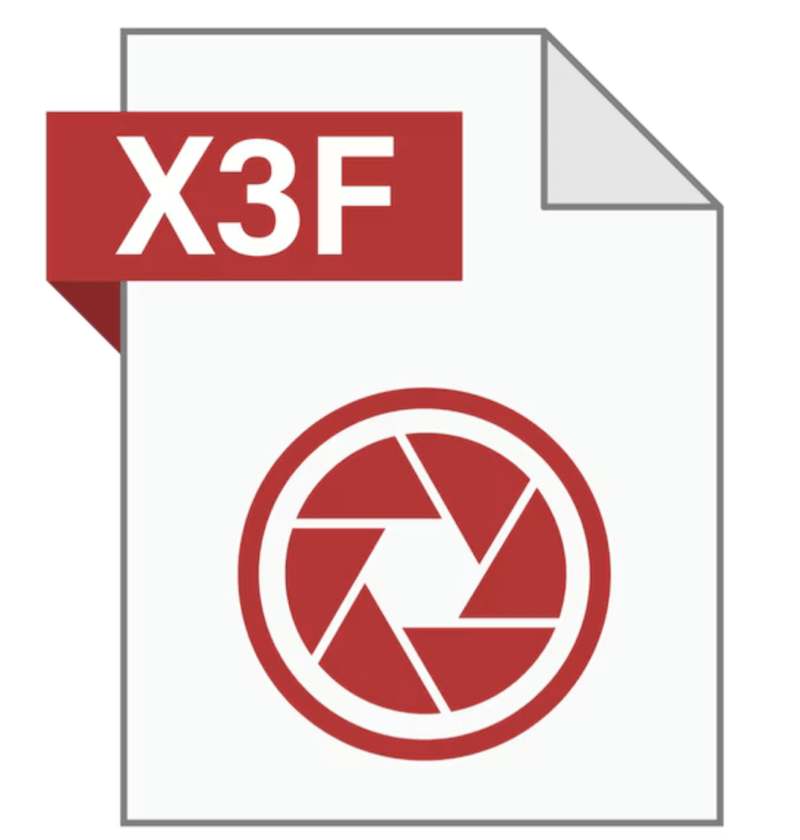
What is the X3F File Format?
The X3F file format is the raw image format used by Sigma cameras equipped with the Foveon X3 sensor. This sensor is distinct from traditional Bayer sensors used in most digital cameras. The Foveon X3 sensor captures red, green, and blue color information at each pixel level, which leads to improved color accuracy and detail, especially in images shot at high resolutions. The X3F format stores this data in its most unprocessed form, making it ideal for professional photographers who need full control over image editing.
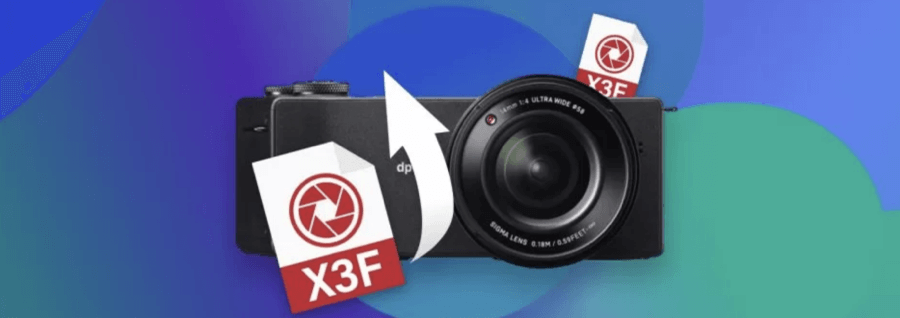
Technical Structure of X3F Files
An X3F file contains several elements that are essential for high-quality image capture:
- RAW Image Data: The core of the X3F file is the raw image data taken directly from the camera's sensor. Since it's uncompressed and unprocessed, the file retains all the image information, including fine details in both shadow and highlight areas.
- Embedded JPEG Preview: While the raw image data contains all the sensor's information, X3F files also include a small, embedded JPEG version of the image. This preview is used for quick viewing and allows users to see an approximation of the final image before any post-processing.
- Metadata: The metadata embedded within the X3F file includes information about the camera settings, such as exposure, shutter speed, aperture, ISO, and white balance. It may also contain EXIF data, GPS coordinates, and camera model specifics. This metadata is valuable when organizing and editing photos.
- File Extension: X3F files typically have the file extension .x3f. These files are usually stored on the memory card of Sigma cameras and are recognized by image editing software that supports Sigma's raw file format.
Advantages of X3F Files
X3F files offer several advantages, especially for professional photographers and enthusiasts who value image quality and post-processing flexibility:
1. Unprocessed Image Data
As a raw format, X3F files store image data without any processing or compression. This gives photographers the ability to adjust settings like exposure, white balance, contrast, and sharpness without any loss in image quality. Raw files are ideal for editing, as they contain more image information compared to compressed formats like JPEG.
2. Foveon X3 Sensor Benefits
The Foveon X3 sensor, unique to Sigma cameras, captures three layers of color data at each pixel. This technology leads to a higher level of detail and better color accuracy than traditional sensors. The three layers allow for more vibrant and realistic color reproduction, especially in challenging lighting conditions.
3. Better Post-Processing Control
Since X3F files contain all the raw data from the sensor, they allow for greater flexibility during post-processing. Unlike JPEG files, which have irreversible compression, raw formats like X3F retain maximum quality, providing photographers with much more latitude when adjusting exposure, color, and sharpness.
Common Reasons for X3F File Loss or Corruption
Despite the advantages of the X3F format, there are several common situations in which these files might be lost or corrupted:
1. Accidental Deletion
The major reason of data loss for photographers is accidental deletion. Whether it's a mistake while organizing photos on the camera or during a transfer to a computer, it's easy to delete important X3F files unintentionally.
2. Corrupted Memory Cards
Memory cards are not infallible, and issues like file system errors or hardware failure can lead to corrupted files. An X3F file can become corrupted if there's a disruption during file saving or if the card becomes physically damaged.
3. Formatting Issues
Sometimes, users might accidentally format their memory cards, thinking they are clearing old photos, only to discover later that important X3F files have been erased in the process. Formatting a card does not always immediately wipe all data, but it can make recovery more difficult.
4. Camera Malfunctions or Software Bugs
Camera malfunctions, firmware crashes, or software bugs can sometimes result in incomplete or corrupted X3F files. This can happen during the capture process or when transferring files to a computer.
5. Virus or Malware Attacks
In some cases, malware or viruses can affect the file system or corrupt specific files, including X3F images. This can lead to difficulties when trying to access or recover the affected images.
How to Recover X3F Files?
When an X3F file is lost or corrupted, prompt action is crucial for successful recovery. As soon as you desire to recover the files, the better the chances of restoring them without further damage. Below are some methods for recovering X3F files:
1. Initial Precautions
Before attempting any recovery, follow these essential precautions:
- Stop Using the Storage Device: If you realize that X3F files are missing or corrupted, stop using the memory card or storage device immediately. Continued use of the device can overwrite the deleted or corrupted data, making it much harder or even impossible to recover.
- Avoid Overwriting: If you are trying to restore files from a camera's memory card, don't take more pictures or record new data on the card. Avoid transferring other files to the card as well.
2. Check Recycle Bin or Trash (for Transferred Files)
If you recently transferred your X3F files to a computer and later discovered they were missing, check the Recycle Bin or Trash. Sometimes, files are accidentally deleted but can be restored from here with minimal effort.
3. Use Backup Services
If you regularly back up your photos, now is the time to check your backup service. Cloud services like or local backup solutions may have copies of your X3F files. Restoring from a backup is often the easiest and most reliable method of recovery.
4. Professional X3F File Recovery Software
When no backup is available and the files aren't in the Recycle Bin, the next step is to use professional data recovery software. These tools can scan your memory card or storage device for recoverable X3F files.
How to Use X3F File Recovery Software
Step 1: Connect the affected storage device (e.g., memory card or camera) to your computer.
Step 2: Install and launch your recovery software - such as Donemax Data Recovery. Many recovery tools have specific modes for image file recovery, so ensure that the software supports X3F files.
Donemax Data Recovery supports to recover all file formats including X3F file. Just download and install it on your computer.
Step 3: Scan the device for lost or corrupted X3F files. Depending on the device's size, this could take a while.
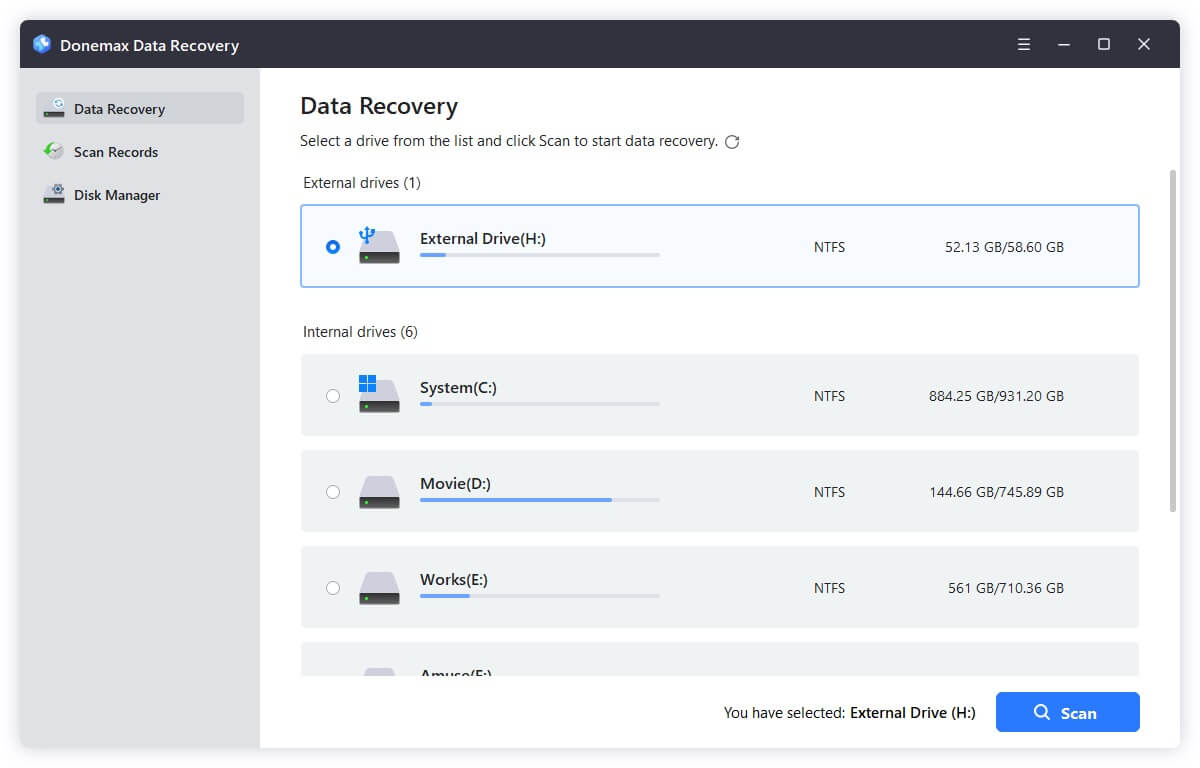
Step 4: Preview the found files. Many recovery programs allow you to preview images before recovery.
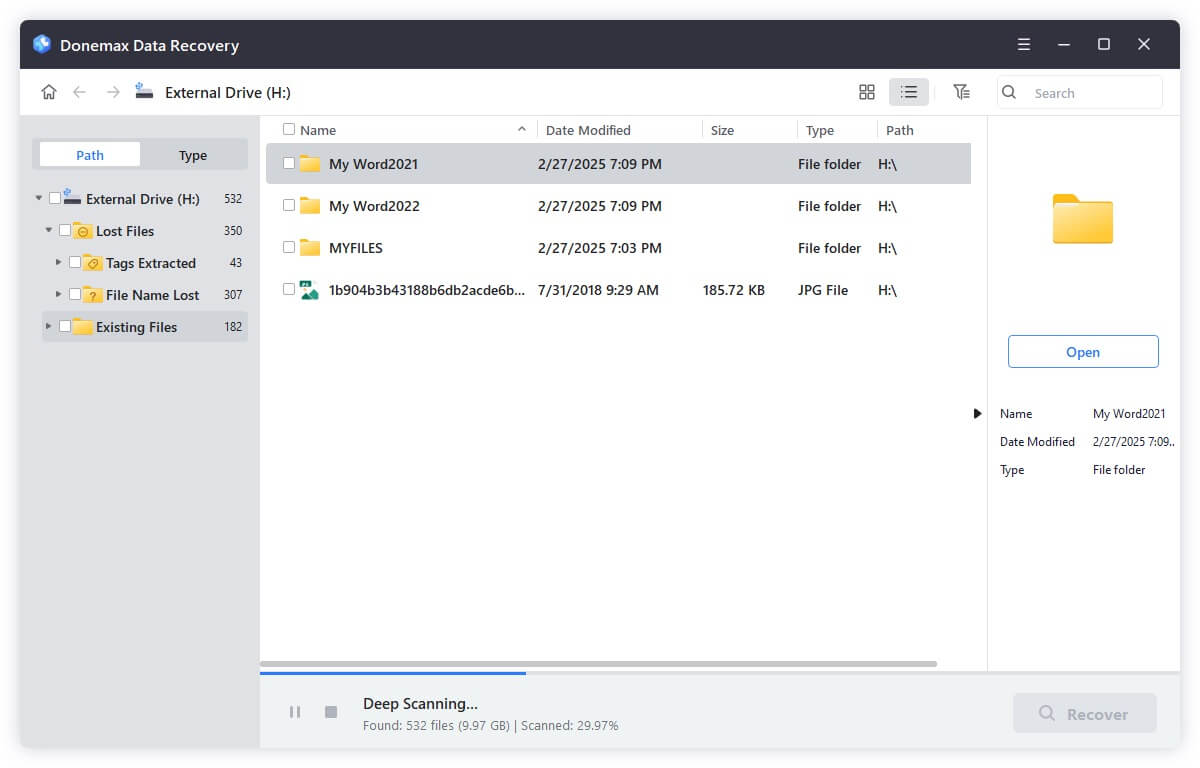
Step 5: To prevent overwriting, recover the chosen files to an alternate storage location.
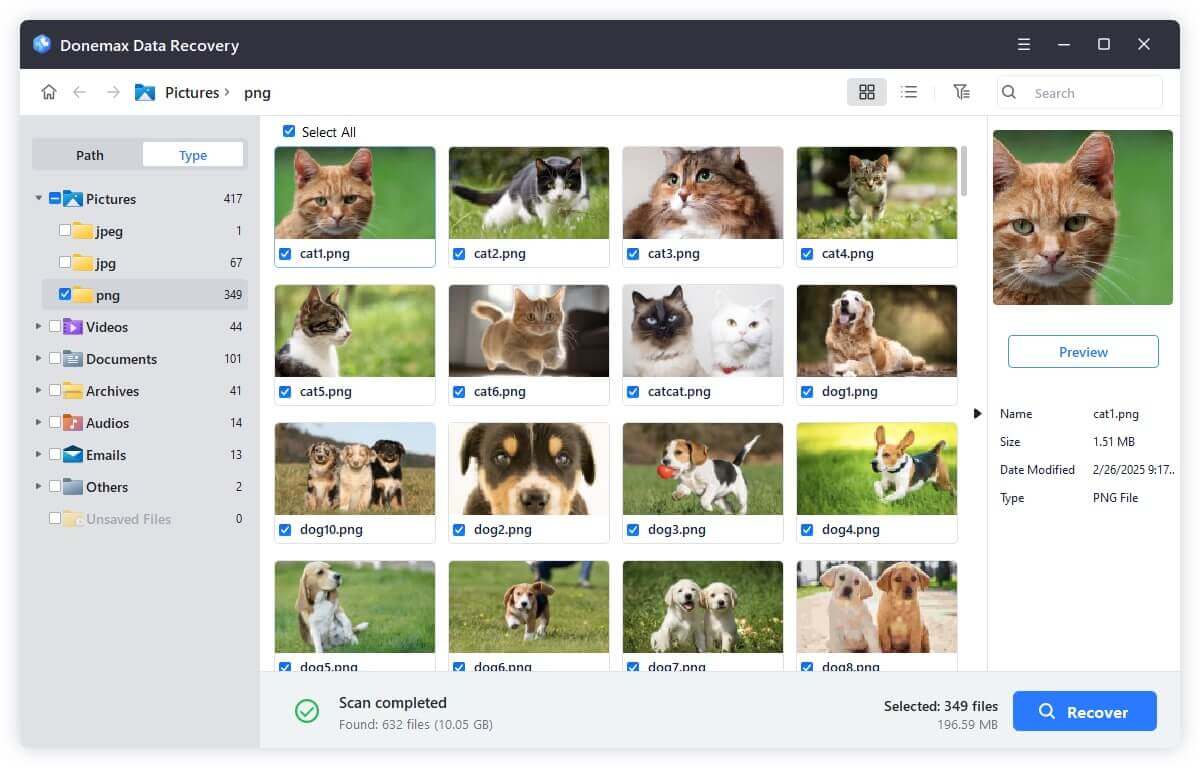
More recovery tools that support X3F files include:
- Stellar Photo Recovery: A reliable tool that can recover various image formats, including raw files like X3F.
- Disk Drill: Known for its user-friendly interface and effective scanning capabilities.
- PhotoRec: A free and open-source tool that supports a wide range of file formats.
- EaseUS Data Recovery Wizard: A trusted option for recovering lost or corrupted files from various storage devices.
5. Expert Data Recovery Services
If recovery software fails or the damage is too severe, professional data recovery services are available. These services can recover data from faulty or damaged storage devices since they have the necessary equipment and knowledge. Success is not assured, though, and this treatment can be expensive.
Tips to Prevent Future Loss of X3F Files
While data loss can never be completely avoided, there are several preventive measures you can take to safeguard your X3F files:
- Regular Backups: Always back up your images, either to the cloud or to an external hard drive. This ensures you have a safe copy of your files in case something goes wrong.
- 2Use Reliable Memory Cards: Invest in high-quality, reliable memory cards. Avoid using low-cost or counterfeit cards, as these are more prone to failure.
- 3Avoid Interruptions: When transferring files from your camera to your computer, make sure the process is not interrupted. Avoid removing the memory card too soon or powering off the camera mid-transfer.
- Keep Camera Firmware Updated: Regularly check for firmware updates for your Sigma camera. New updates can fix bugs that might affect file integrity and improve overall camera performance.
- Antivirus Software: Ensure your computer is protected by reputable antivirus software to avoid malware or virus infections that could corrupt your files.
Conclusion
The X3F file format is an essential tool for professional photographers who use Sigma cameras. Its raw image data offers incredible flexibility in post-processing and image quality, making it a valuable asset. However, like all data formats, X3F files are susceptible to loss or corruption due to a variety of factors. The good news is that by taking quick action and utilizing the proper recovery methods, many lost or corrupted X3F files can be restored. Preventive measures, such as regular backups and careful handling of your memory cards, can also help you avoid data loss in the future.


Donemax Data Recovery
One of the best data recovery programs to recover deleted, formatted or lost data from PC, Mac, HDD, SSD, USB drive, SD card, camera, RAID, Sever or other storage devices.
Related Articles
- May 19, 2025Recover Formatted CF Card: Step-by-Step Data Recovery Guide
- May 29, 2025Recover Deleted DXR File: Step-by-Step Guide
- Jun 20, 20254 Methods to Recover Deleted OpenEXR Files
- May 29, 2025How to Recover Lost Data from a Damaged/Corrupted Partition?
- May 19, 2025Recover Unsaved, Deleted, Corrupted, Overwritten Adobe Illustrator Files
- Feb 11, 2025Recover Data from a Corrupted SD Card: A Step-by-Step Guide

Christina
Christina is the senior editor of Donemax software who has worked in the company for 4+ years. She mainly writes the guides and solutions about data erasure, data transferring, data recovery and disk cloning to help users get the most out of their Windows and Mac. She likes to travel, enjoy country music and play games in her spare time.

Gerhard Chou
In order to effectively solve the problems for our customers, every article and troubleshooting solution published on our website has been strictly tested and practiced. Our editors love researching and using computers and testing software, and are willing to help computer users with their problems
